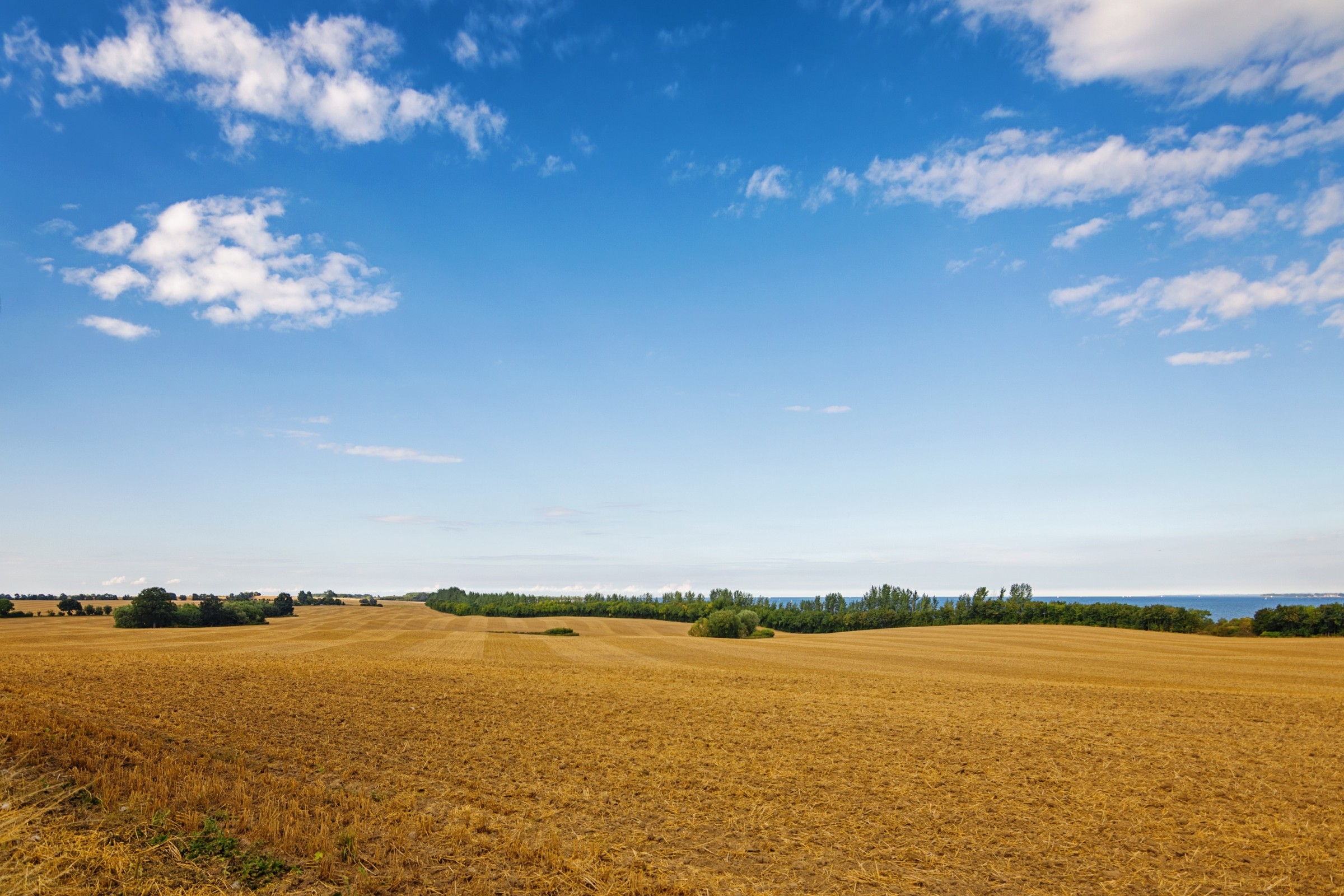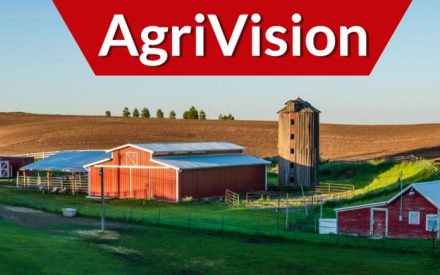View Transcript
Katie Wantoch
This is UW Extension’s Farm Management AgriVision Podcast. I am Katie Wantoch Agriculture agent with UW-Madison Division of Extension. I will be chatting with fellow Extension educators as we answer questions from farmers and share our knowledge and expertise on how you can improve your farm management skills. Today I’m joined by Jerry Clark, Associate Professor and Agriculture Agent with Extension in Chippewa County. welcome Jerry to the podcast.
Jerry Clark
Thank you, Katie.
Katie Wantoch
Jerry, a farmer and his neighbor each milk between 180 and 200 Holstein cows and both farm about 300 owned and rented acres. They have been chopping their forages and putting them in covered drive-over piles, but get a lot of spoilage with this storage method. They’re talking about buying an Ag bagger together. They think it will pay for itself in a few years, especially with high feed prices. Jerry, do you think they need to form an LLC for this bagger? They’re thinking that they could help pay for it by renting it out to a few neighbors when they aren’t using it. The farmer and his neighbor are planning to put all of their forages in bags, as well as harvest corn for high moisture corn, which would save a lot on harvest costs and drying. What are your thoughts?
Jerry Clark
Well, I think the question here is right up front, where they mentioned getting a lot of spoilage in these drive-over piles. So maybe that’s where we’re starting to look at management. And before investing in a bagger or forming an LLC, maybe we need to figure out where the issue is with the drive-over piles, because that is kind of where the industry is headed right now is the drive-over piles. There’s less equipment as far as you don’t need the special equipment like a bagger. As long as you got packing tractors and the good pad and the plastic you’re going to need for a bagger anyway, to put over these piles. So let’s look at that first. Are there are things that it’s not being packed enough, it’s not dense enough is the silage coming in at good moisture at the proper moisture for packing, the upper 60s to lower 70% moisture for good pile construction, and is it just being covered correctly and tightly with the proper tires or the proper weights on the top to hold that plastic down nice and tight to the silage. So there’s probably some management things we could look at there before going into the Ag bagger. Bagging does work well, but there’s still management with that. Still have to be able to keep critters out of it, from poking holes in the tops of the bags, they’re much more conducive to wildlife damage. Some of these kinds of things, then that drive-over piles. So just looking at the spoilage in that drive-over pile might be the first place to look. Now if that improvement can’t be made there. And we’re looking at this bagger, and forming an LLC, especially with a neighbor, if it’s just the two neighbors, you and your neighbor working on it. You’re the only ones that are going to be using it, then the LLC is probably not needed, if there’s just an agreement between the two of you sharing it between the two farms. And that should work a little bit easier. Now, if it’s going to be rented out and starting to be used more as a custom business, then that’s where we’re probably looking at forming that LLC simply because it’s going to be who’s liable for just from a liability standpoint, it’ll give protection from any operational issues or some of the business side of it. Keeps it a little cleaner that way as it moves around, but then you start to get into the management of the business side of it. And that’s where you start to look at who’s going to schedule the bagger, do maintenance. And the labor management who’s going to get charged to reimburse for those kinds of things between the two farms or the two entities who’s going to do all the record keeping and the payments and being kind of the clearing house of the day-to-day operation type of thing and that management of it. So I think that’s where you start to look at the LLC is definitely gonna help keep that cleaner, especially if it’s used more as a, as a custom business.
Katie Wantoch
Yeah, I agree. Jerry, if it’s just the farmer and his neighbor working together, partnership with an operating agreement would be fine. And they can share in the costs associated with that, split it up and working with their tax preparer and accountant to do that. But yeah, you take it that one step further. And you put it into kind of almost a business venture together where there potentially could be profits that they would be sharing, then, yeah, they definitely want to have also an operating agreement that spells out how they came into this, how they’re splitting up all of these different payments, the income and who’s going to benefit when there is a profit. How are those profits going to be split? And you certainly want that ahead of time before you even buy the bagger so that you’re not fighting about it, trying to decide these things and it doesn’t work out. You kind of ruin that relationship with your neighbor. Other thoughts on just the quality of the forage going in. You kind of talked about that spoilage a little bit. What does that spoilage look like on it with a bag?
Jerry Clark
There again, it all boils down to management. I think if we can keep our percent dry matter loss, you know, below 5% dry matter loss, that’s where you’re doing pretty good job management. Some farms have a target of less than 5%, or, you know, maybe 2%. They really try to focus on minimizing that spoilage. So again, with a, with a bag, it’s still going to be, need to be sized right placed at the correct place where you look at easy filling on a flat surface for filling and removal of the feed. And then also sizing the bag so you get proper removal rate of the crop that’s in there. And you know, with any plastic storage, whether that’s a drive-over pile or a silage bag, sealing that up at the end of the day, or that exposed face is always going to cause some type of dry matter loss. So trying to manage it still boils down to management right from the start again, like I said, getting the forage in at the right moisture, depending on the length of cut for packing and the number of packing type of passes you make on the silage pile, some of that gets removed in using a bag. And so the machine still has to be set up right with a bag the right breaking the right size tractor filling the rate per per minute as far as how much is going into that bag. So all of that comes into play as far as that forage quality. So you got to have good quality forage going in, in order for it to come out. And there again, it’s still management as far as keeping that plastic maintained tight to the forage, those kinds of things. So there may be an opportunity here to try to manage the current drive-over pile. Maybe management needs to be improved there before making the investment in a bagger. And maybe that’s all that’s a look at that as a first step. doing the best you can the rates still aren’t. The forage loss is still too high. On a dry matter standpoint, the bagger can help with that. But again, once those bags are opened and need to be managed correctly, especially working off of that, that opening for the bag and making sure it’s resealed. So we don’t have more aerobic conditions getting into that silage, which can reduce forage quality relatively quickly.
Katie Wantoch
Yeah, those are great suggestions on that proper management of silage piles or silage bags there from Jerry Clark. So, well Thanks, Jerry for your time today. Really appreciate it.
Jerry Clark
Yeah, thanks for having me, Katie.
Katie Wantoch
For more Extension AgriVision podcasts or resources to improve your farm management skills, check out farms.extension.wisc.edu Thanks for listening
Related Resources
Information in this article was originally published as part of the Agrivision column in Wisconsin Agriculturist.
Extension resources


 AgriVision Episode 27 - Harvesting high-moisture corn makes sense
AgriVision Episode 27 - Harvesting high-moisture corn makes sense


